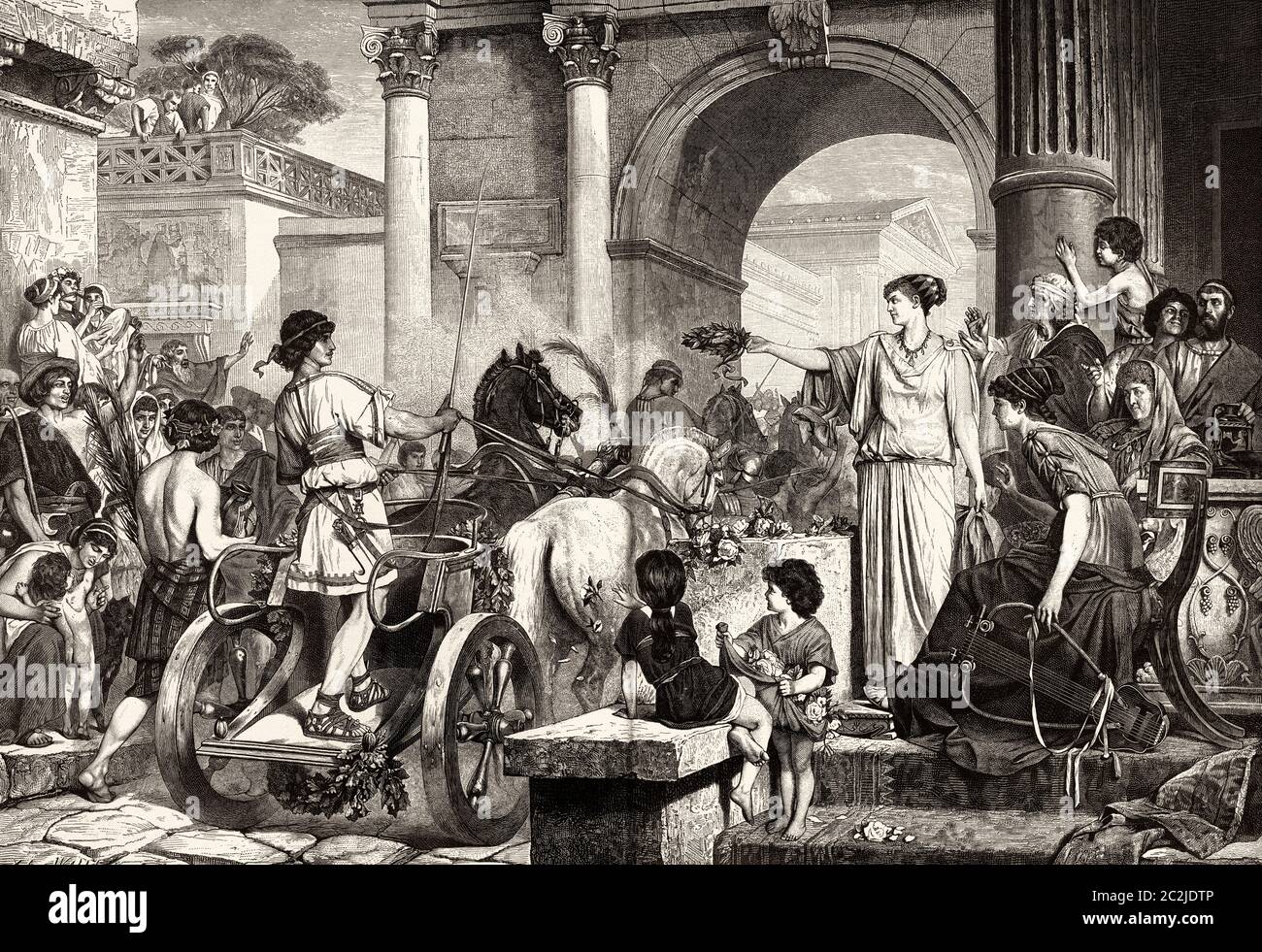
The crazed emporer Nero was a chariot racing enthusiest, and himself raced in several races. Rome, however, as always, held claim to the most spectacular staging ground for these races – the Circus Maximus. Like the games, chariot races were staged in many cities across the empire. Chariot racing was famed and loved by Romans all around, and even grew to rival the gladiatorial games on many grounds. Beginning in the first century BCE, chariot racing became heavily commercialized in Rome organized betting was introduced and riots often followed. The Romans most likely got the chariot racing tradition from the Etruscans, who directly borrowed it from the Greeks. It would decorate vases, sculptures, and even be printed on coins. In addition, chariot racing was popular in Greek art. Pindar, a Greek lyric poet, tells of one particular chariot race in which a total of forty teams entered, but only one finished. Accidents happened almost every time a race occured, and the tempers of the charioteers were very hot. The charioteers drove the vehicle while standing up. Greek chariots were light-weight and two-wheeled. Most charioteers were nobles, although by the 7th century BCE, charioteers from the lower classes also entered the profession.
#Ancient greece chariot races driver#
The most important of any of the races were teams of four horses controlled by one driver this type of race was also one of the most dangerous as well. Victory wreaths were often the prize most charioteers were competing for. The course, nearly 14 km in all, consisted of 12 double laps. The race was won by Diomedes, and he recieved a slave woman and a cauldron as his victory prize.Ĭhariot racing was so popular among the ancient Greeks, infact, that it was often the first and most spectacular of any event in the Olympic Games, which began in 776 BCE. According to Homer’s poem, one of the participants was warned by his father that this race would depend on not only the speed of the horse pulling the chariot, but also the skill and and craftiness of the charioteer. At that point, they would then turn around and race back to the starting point.

They would then race down a long stretch until they reached a spot marked by a tree stump and a bunch of white stones. The charioteers would all begin a predesignated spot. The race was to take place in the countryside.

Five chieftains by the names of Diomedes, Eumelus, Antilochus, Menelaus, and Merione, were to drive two-horse chariots as the first event in the funeral games arranged by Achilles for his late friend, a Greek warrior by the name of Patroclus. Greek poet Homer wrote in the 8th century BCE about one such chariot race in his epic poem The Iliad. Chariot racing was the drag racing of ancient times. Charioteers would often stand rather than sit when driving the chariot. Chariot racing was a public game in which horses pulled a two-wheeled cart that was driven by a charioteer. Although unlike the games, this event was popular not only in Rome, but also ancient Greece.

A more humane alternative to the cruel and brutal gladitorial games of ancient Rome was chariot races.


 0 kommentar(er)
0 kommentar(er)
